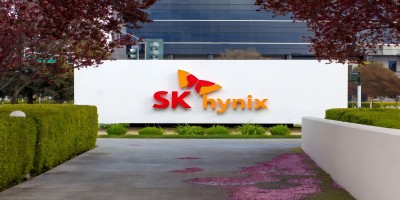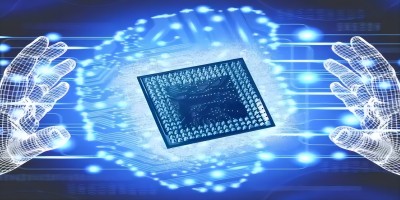In recent years, the meaning of the term "development board" has almost disappeared, and it has been absorbed by a large number of other hardware board terms used to represent development goals, such as "demonstration board", "evaluation kit", and "reference design"
We will define a "development board" (Figure 1) and describe its differences from the closely related single board computer (SBC or single board computer) in this article. We also plotted their evolution from the past to the present and explored possible future trends.

What is the Development Committee?
Firstly, it is necessary to provide a precise explanation of the development board and their differences from single board computers. Microcontroller manufacturers often produce development boards to highlight their functionality, even though they are now typically applicable to other types of components. A microcontroller is an integrated circuit with processor, RAM, flash memory, and IO functions that can communicate with the outside world. Its working principle is like a microcomputer encapsulated in a single software package, with the goal of providing developers with a simple way to interact with it and control other components, such as lights and small motors. Single board computers also have this function, but the CPU, RAM, and memory are all located in separate ICs on the board, and the interfaces allow them to be connected to the keyboard and/or display.
The microcontroller uses the Integrated development environment (IDE) provided by the supplier for processing, while the microprocessor on a single board computer requires an operating system. Manufacturers are increasingly producing development boards with microcontrollers, but their main function is to demonstrate sensors or other integrated circuits that interface with them, rather than the microcontrollers themselves. Demonstration boards, evaluation toolkits, and reference designs are all terms used to describe these projects. If they are put together, create a collection of several elements to achieve a specific purpose.
Some boards are designed to provide access to real data, which software developers need to establish and improve algorithms for artificial intelligence and machine learning applications. Although these may not match the original description and functionality of the "development board," they are now collectively referred to as any hardware that can be used to develop new electronic hardware and software.
History of the Second Development Bureau
Arduino (see Figure 1) was the first microcontroller development board that attracted the attention of the Electronic engineering community in 2006. The prototype platform released at that time was called Arduino. It quickly became popular among amateurs, amateurs, and DIYER. Many electronic designers, including engineers, are using it. The Beagleboard released in 2008 provided engineers with a low-cost, open-source community supported development platform, laying the foundation for the commercial success of later single board computers and microcontroller based systems. The Fupenzi PI was the first single board computer that debuted in 2012. Like Beagleboard, it was developed as an educational platform aimed at teaching students how to code at a low cost. The appeal of the Fupenzi PI far exceeded that of the student community, and it was quickly adopted by amateur and professional developers.
III. Current Development Board
Single board computers are now divided into two categories: proprietary and open source. Typically, proprietary SBCs are created for final applications and undergo testing and quality assurance procedures similar to other final products. They are either built-in in the circuit or installed in the rack. Open source SBC users can view their hardware design and layout, as well as any source code they use. Users can quickly and easily understand how software and hardware work, and then choose designs that meet their needs.
Nowadays, development boards and single board computers can be equipped with various types of processors, from X86 based processors in traditional PCs (AMD and Intel) to ARM processors in industrial and mobile applications. Linux and its derivatives (Ubuntu, Fedora, Debian, etc.) are the most popular operating systems on SBC. The microcontroller development board does not need an operating system, but uses the manufacturer's Integrated development environment (IDE) for programming. Microcontroller development boards and SBCs have evolved to include wireless connectivity (Wi Fi, Bluetooth) and the latest audio and video interfaces, enabling some SBCs to compete with many PCs and tablets in terms of functionality.
The development board of the future will be the final product
Manufacturers traditionally create development tools as marketing tools to increase the opportunity to sell microcontrollers to potential customers (this practice is referred to as "design" in the industry). They expect that by making it easier for design engineers to access and study the functionality of parts in the laboratory, they will be more inclined to choose microcontrollers and auxiliary parts, thereby obtaining early product prototypes. If this part is selected for mass production, a larger product order will be placed. If there is little difference in technical specifications between parts from different sources, this is a wise technique for some products. However, for manufacturers, this strategy has become a victim of their own success in certain aspects. They realize that they must continue to reduce the workload required for engineers to use their products, and development boards have become a key differentiation factor, especially for products that are usually comparable to competitors' products.
Even for components with obvious competitive advantages, such as power or speed, design engineers are increasingly looking forward to "plug and play" access to development boards.
Manufacturers can further enhance their value proposition by providing reference designs including microcontrollers and other integrated circuits (usually sensors). These reference designs were originally intended to provide instructions on how to connect devices to simulate the electrical functions of the final product, with minimal attention to shape factors, design dimensions, or manufacturing simplicity. On the other hand, some manufacturers have adopted reference designs and transformed them into mature product prototypes, even fully functional products.
This progress can be illustrated using the Health Sensor Platform (HSP) reference design of Maxim Integrated (now part of Analog Devices). The first version of these reference designs is a small development board with a microcontroller that can be used to create various sensors (temperature, pressure, accelerometer, bioelectric potential, etc.) suitable for health and fitness applications. The company's next generation products HSP2.0 and HSP3.0 already have appearance factors that can be worn on the wrist, similar to other wearable devices on the market (Figure 2).

This allows developers to test the operation of their sensors in the real world. These designs also allow software developers to have open access to sensor readings (information that other health and fitness wearable devices cannot access). This strategy aims to make it easier to create machine learning and artificial intelligence algorithms that provide value for specific applications.
Maxim Integrated hopes that by demonstrating how hardware makes it easier for developers to access the data they need, they will be able to select some (or all) ICs in sensor solutions for product design. Maxim Integrated adopted a similar approach when developing products such as MAX Fitness Wrist and MAX ECG Monitor, both of which are fully conceptualized and constructed reference designs and are fully functional wearable health and devices. However, although Maxim Integrated does not intend to sell directly to consumers, the company may collaborate with the company to label the products in exchange for royalties.
Providing a fully functional product in this way, with all development work completed, is particularly attractive for new customers and more non-technical business customers. Thingy: 91 from Nordic Semiconductor Company is another example of a development platform where hardware is just an additional component that allows developers to access data. They must write software and algorithms to leverage the inherent value of hardware (which is convenient and utilizing these algorithms has become an obvious choice in new product design). This strategy may be used by more manufacturers in the future.
Increase the use of development boards in industrial products
The use of development boards and single board computers in general commercial products has become commonplace, but another emerging trend is that they will be used in smaller but higher value industrial terminal products, such as Programmable logic controller, whose standards are stricter than commercial products.
Six industrial application test boards
Because the components they contain were originally created for the final product, many SBCs today are essentially fully validated designs that have undergone testing and quality verification. In addition, as open source design is constantly reviewed by expert designers and programmer teams, the boards and software used will be updated and evaluated.
Single board computer boards are currently inspected by high-quality design and manufacturing enterprises, and they are subject to strict quality control like any other final product, including the possibility of obtaining CE or FCC certification. The testing program can also be easily modified to meet the needs of industrial products.
On the other hand, although microcontroller development boards from manufacturers or third parties are usually suitable for commercial products, they usually do not undergo the rigorous testing required for industrial products, so it is currently not recommended for manufacturers to use them immediately in these applications. Use them (in their current form).
Although some development boards use industrial grade components, most are only commercial grade and are designed to operate at ambient temperatures. Development board prototypes are often tested at room temperature for several days or weeks, although there are no fixed guidelines, so it depends on the manufacturer. The main quality requirement of manufacturers is that their development boards work reliably at room temperature, so buyers should be aware that they are unlikely to conduct tests at extreme temperatures or humidity, and are also unlikely to be affected by strong vibration or impact related stresses.
Therefore, when selecting development boards for industrial applications, the primary goal is to minimize risks. If you want to use the development board for industrial purposes, the components on the development board must have a rated temperature. It also requires several days of pressure testing on many sheets at high temperatures. Similarly, if the board is to be used in high humidity areas, it must be tested under similar conditions. If the circuit board will be used in a high vibration environment, vibration testing should be conducted in a testing framework.
Seven Summary
Small businesses can use single board computers and microcontroller development boards to quickly push designs to the market without the need to develop expensive new hardware. This enables them to focus on software development and increasingly on machine learning and artificial intelligence algorithms. Single board computers and development boards greatly exceeded their initial expectations and had a significant impact on the modern history of the electronics industry. Professional engineers and electronics enthusiasts will benefit from single board computers as they become more powerful, intelligent, and responsive.



